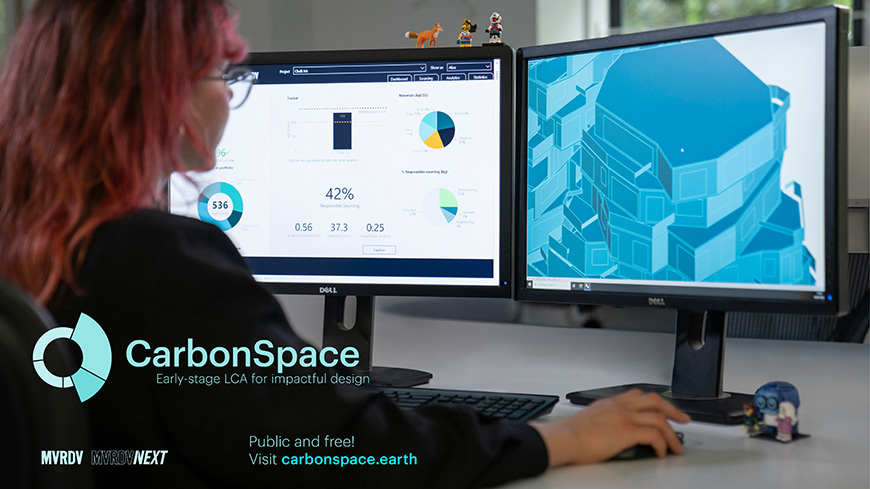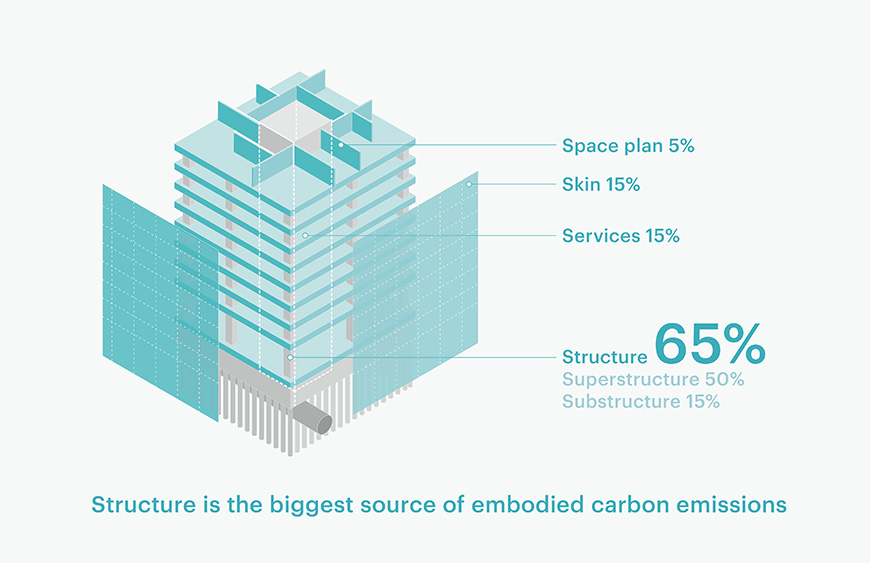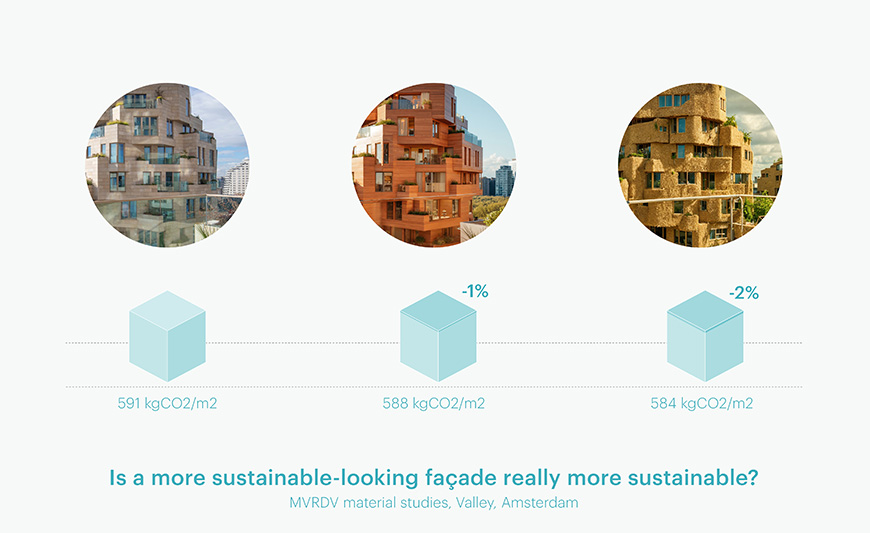MVRDV’s CarbonSpace online tool helps architects to evaluate embodied carbon

MVRDV’s CarbonSpace online helps architects to evaluate embodied carbon
Dutch architectural and urban design practice MVRDV has just released CarbonSpace, an online tool that helps architects design consciously by assessing embodied carbon emissions from the very beginning of the design process.
What are embodied carbon emissions?
According to the World Green Building Council (WGBC), embodied carbon emissions arise from the materials used and construction processes throughout a building’s lifecycle. They include material extraction, transportation, manufacturing, maintenance, repairs, replacements, renovations, deconstruction, transportation of decommissioned structures, and disposal.
The construction sector is well known to play a significant role in climate change, accounting for 39% of global greenhouse gas emissions. Although awareness is growing, reducing emissions remains challenging; one of the many obstacles to this process is the overreliance on calculation tools that require detailed models, precise data, and complex databases, often hidden behind a paywall. Consequently, by the time embodied greenhouse gas emissions calculations are complete, the opportunity to modify the project has often already passed. This push for accuracy has not led to faster or deeper decarbonization; in fact, the focus on reporting has seemingly distracted designers from taking meaningful action. Furthermore, regulations and standards vary from country to country, making honest comparisons of emissions between projects nearly impossible.
MVRDV, CarbonSpace, Courtesy of MVRDV.
Now available in a free, public beta version in English, the tool was created by the MVRDV NEXT research and development unit, in collaboration with Studio AvW.
Designed to support informed decision-making throughout the design process, Carbonspace performs parametric estimations of input data and provides a rapid response to compare different design options. Rather than focusing on detailed calculations typically performed late in the design process, the tool is designed to work from the “early sketch” stage, using approximate input data to provide immediate feedback on the emissions consequences of design choices.
“CarbonSpace won’t solve the climate crisis on its own. But it will help architects design with carbon from day one and make informed decisions. We want to give designers the confidence to act without waiting for perfect data. More importantly, we want to create a shared language for carbon, so we can collaborate, learn from each other, and make better decisions as an industry.” Says Sanne van der Burgh, Head of MVRDV NEXT.
MVRDV encourages professionals from across the industry to explore CarbonSpace, provide feedback, and contribute to its ongoing evolution. Through collective knowledge and open exchange, the studio hopes to support a future where design is not only beautiful and functional, but also lighter, smarter, and lower in greenhouse gas emissions.
CarbonSpace is GDPR compliant. Neither MVRDV nor any other parties have access to user data or design information.
The tool is accessible at carbonspace.earth.
MVRDV, CarbonSpace, Courtesy of MVRDV
copyright Inexhibit 2025 - ISSN: 2283-5474



